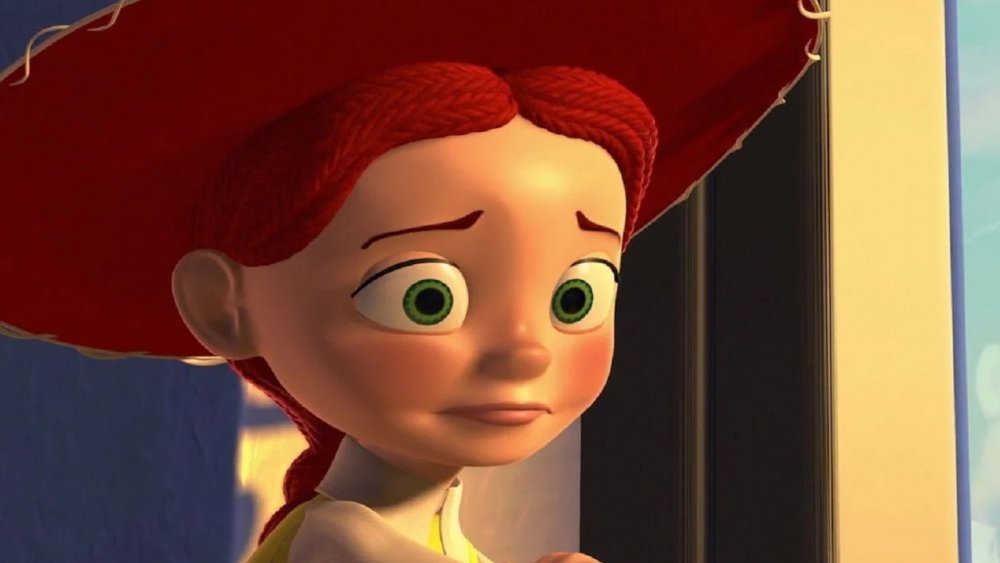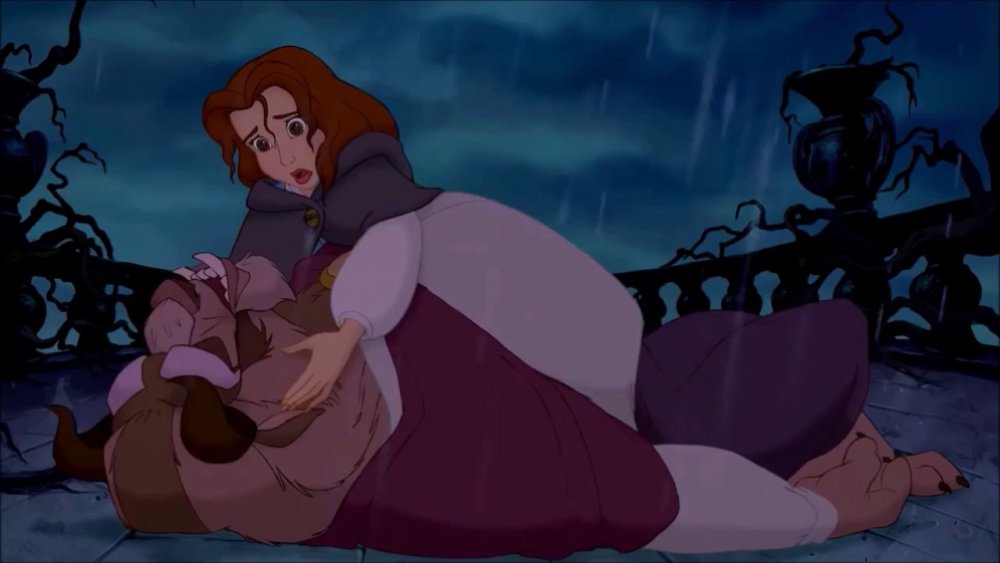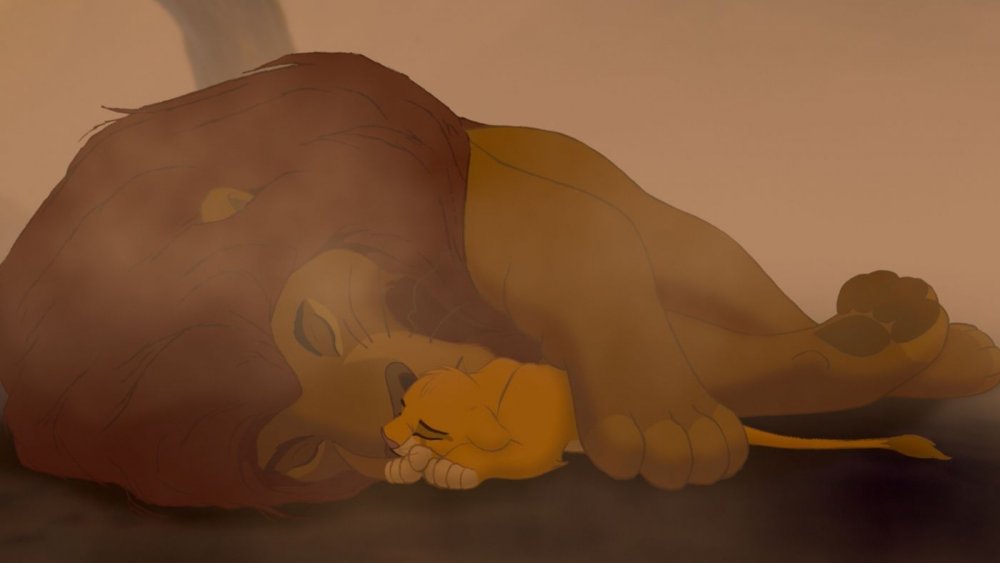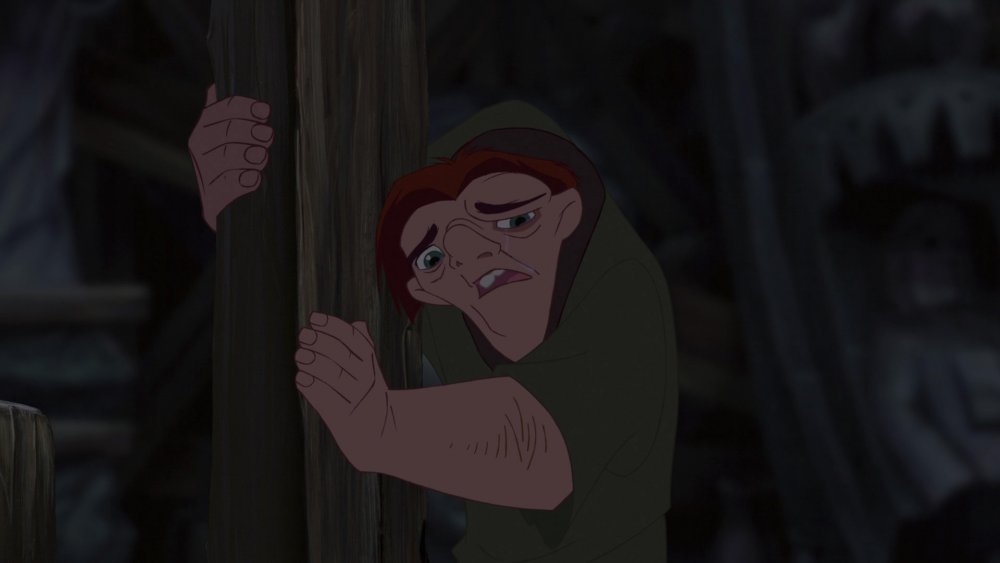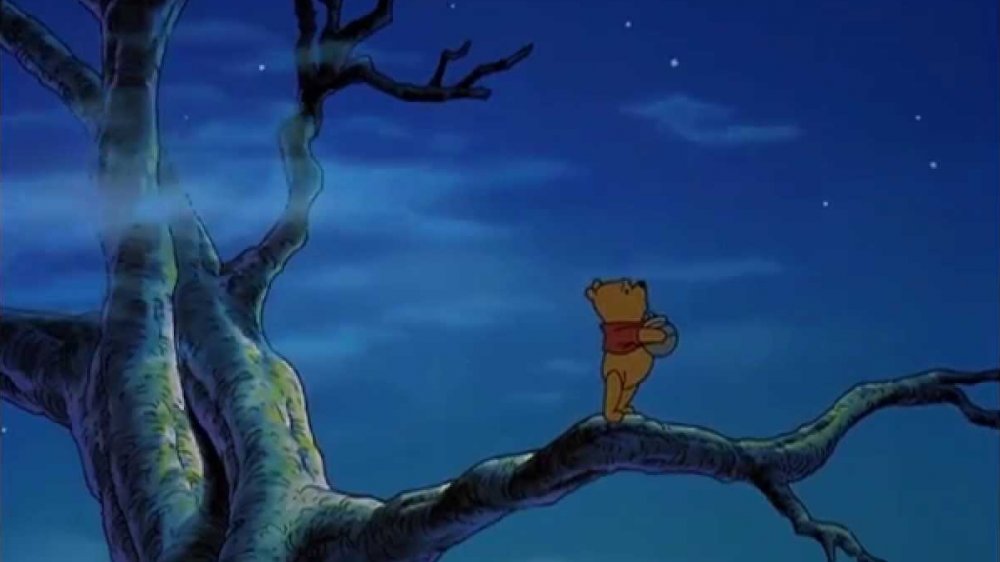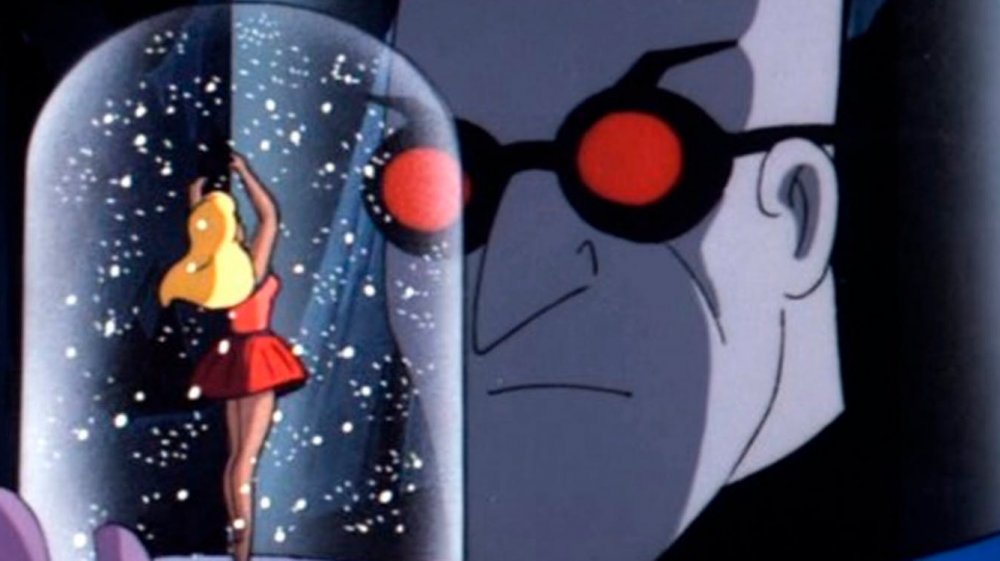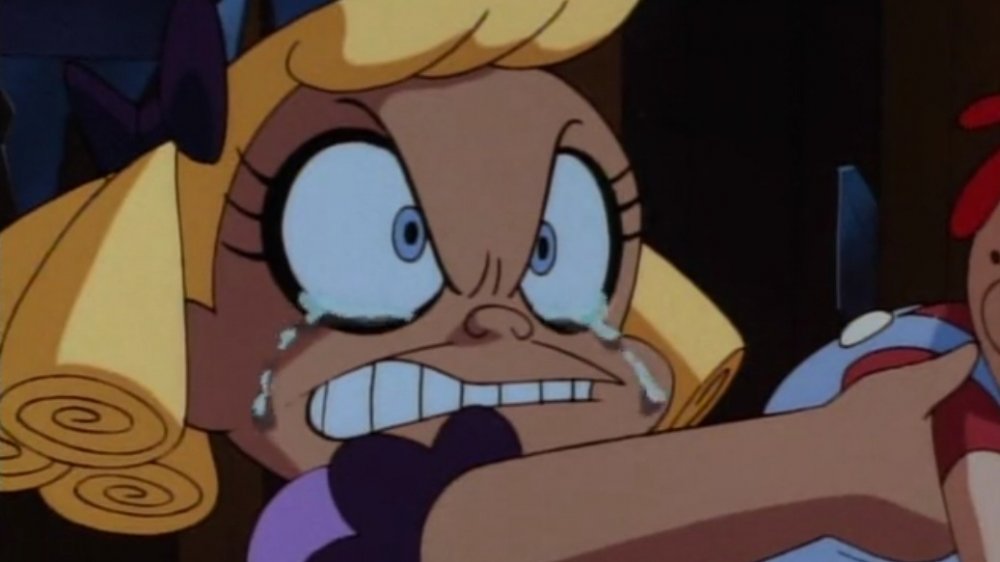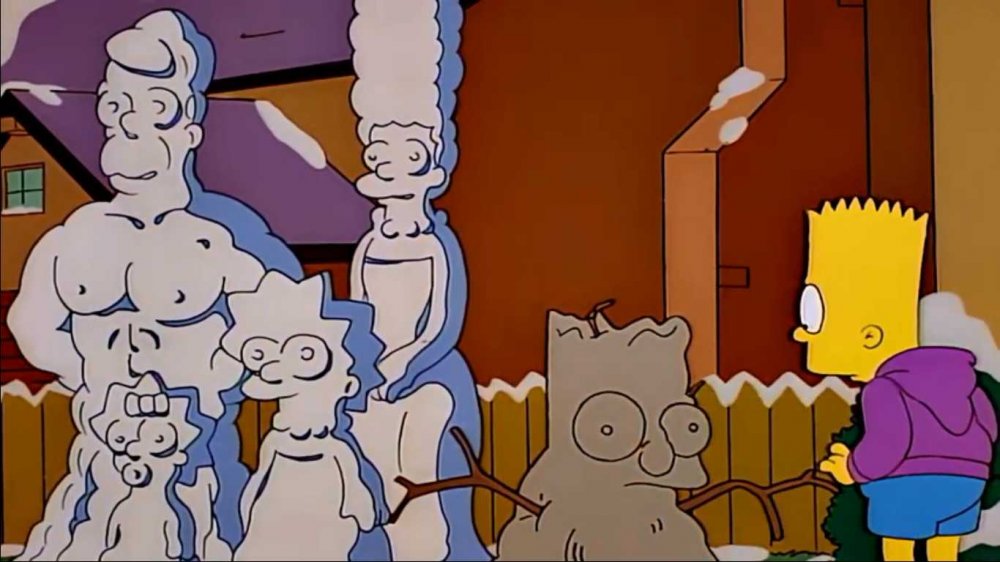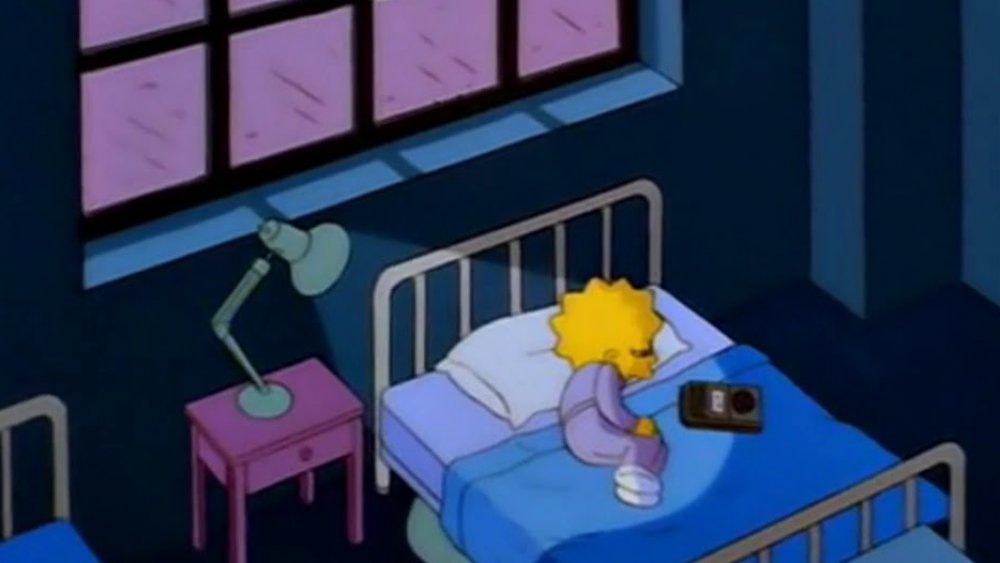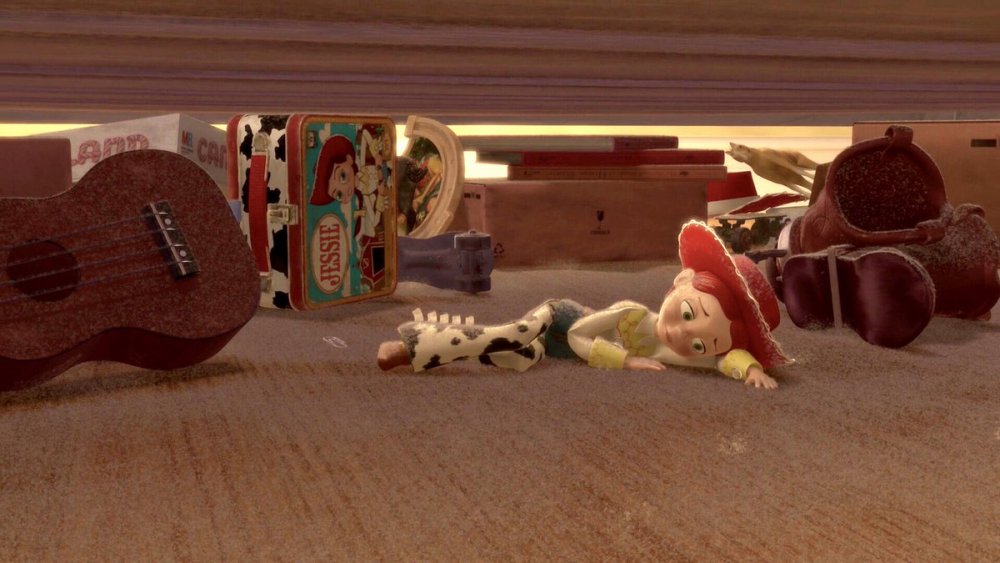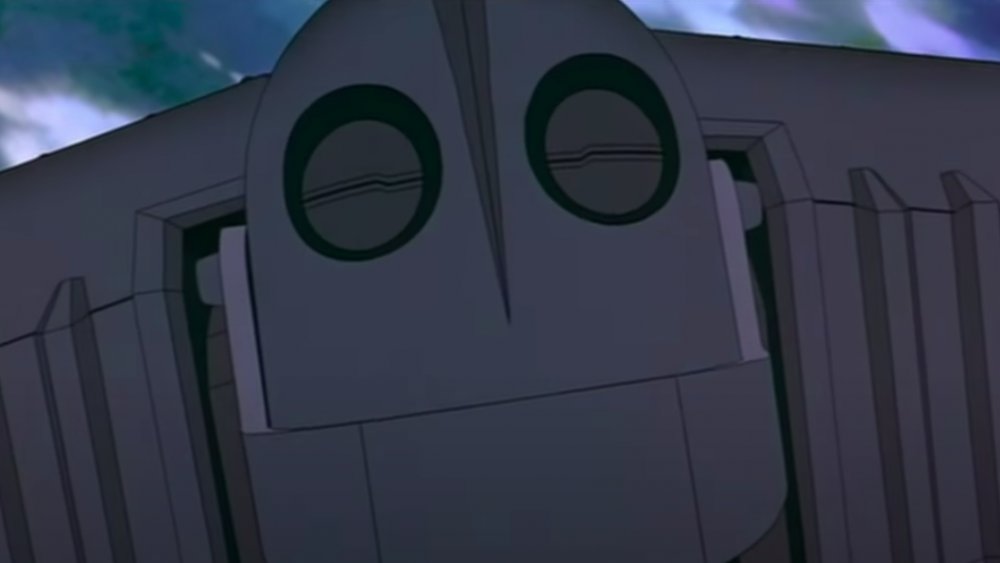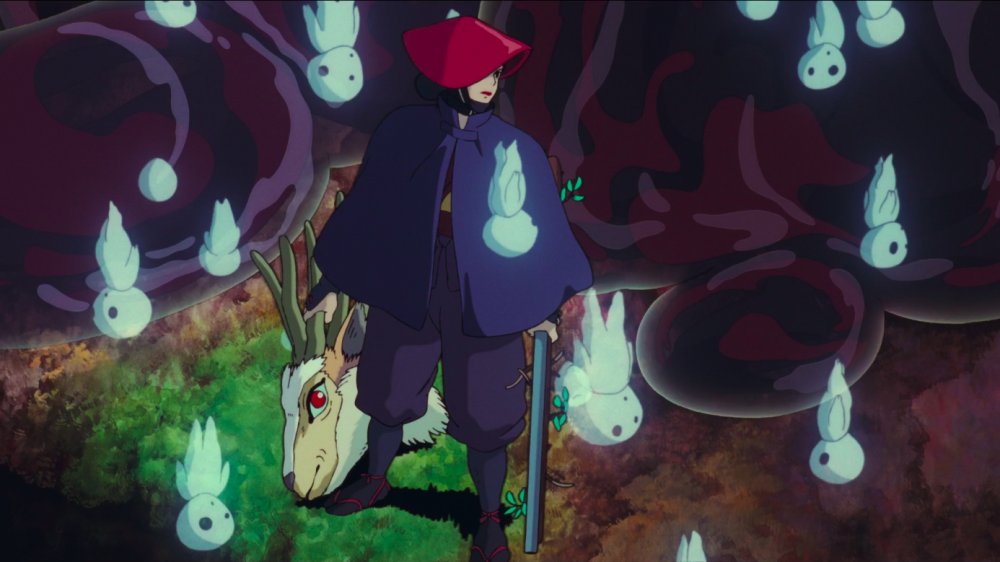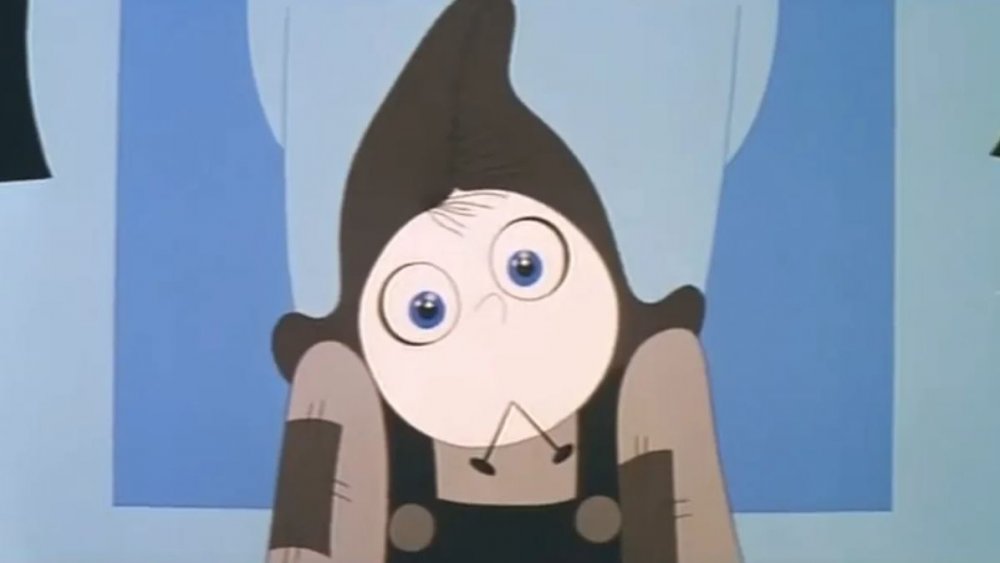The Saddest Moments In These '90s Cartoons
When we think of animation, we usually think of cartoon comedy — ducks getting their beaks blown off and sponges ripping their pants. But one of the great things about the medium is how few limitations it has, and animation can make us laugh and cry. Generations of kids have had cartoons gently introduce them to the heartbreak and pain they'll have to deal with throughout their lives. And the magic of animation can turn that pain into something truly beautiful that will haunt them all the way through adulthood.
Anyone who grew up in the '90s will have no trouble thinking of moments like this, and these cartoons are so timeless that anyone who's grown up since then will be just as attached to them. From dead dads and lost loves to all sorts of heartache and loneliness, these are the animated '90s moments that make little kids and grown men cry.
Beauty and the Beast broke our hearts
Sometimes, the joy in cartoons only works because of the sadness leading up to it. For example, take Disney's Beauty and the Beast. During the film's climax, the jealous Gaston discovers the Beast through Belle's enchanted mirror. Gaston then leads the whole town to kill the Beast, and he locks Belle and her father in their basement so they can't stop him.
Eventually, Belle escapes, and the Beast's servants have routed the angry mob, but it's too late. Gaston fatally wounds the Beast, and he lies dying when Belle finds him. The filmmakers have a tricky balance to pull off here. As in so many movies, Belle's promises to the Beast that he'll be okay are tragic because we know he won't be. At the same time, savvy viewers who know fairytales end happily know he will be. And yet it still works, and a lot of credit for that goes to Paige O'Hara's passionate performance as Belle.
All this sadness is necessary for the happy ending to work. It takes what could've been a foregone conclusion and makes it seem impossible. So when Belle's love does restore the Beast to life and humanity, it feels not just magical but truly miraculous.
Mufasa's death is one of Disney's saddest moments
Some Disney movie deaths have been permanently engraved in viewers' consciousnesses. For proof, look no further than The Lion King. In many ways, this 1994 epic is an update of Disney's classic Bambi, using painstakingly realistic animation to tell an animal coming-of-age story. And the animators did their best to top Bambi's legendary death scene.
Tensions are already high as little Simba is nearly trampled and his uncle, Scar, throws Mufasa to his death in a gorge, where his son finds his corpse. Like any child, Simba doesn't understand the concept of death. His denial is heartbreaking as he keeps trying to wake Mufasa up ... until it finally sinks in. In the end, all he can do is nestle under Mufasa's cold paw for comfort.
Scar convinces Simba to run away before the other lions blame him for Mufasa's death, and then he sends his hyena minions after him in what ends on a slapstick note, courtesy of a thorn grove. In a lesser movie, that kind of wacky comedy would break the mood. But The Lion King lets the tragedy sink in enough that the comic relief really is relieving. And every member of the crew gives their all here, from voice actor Jonathan Taylor-Thomas, sounding on the verge of tears, to composer Hans Zimmer's haunting chorale.
Heaven's Light is utterly devastating
Disney often pushes against the conventional wisdom that cartoons are only good for light comedy, and they pushed their limits even further to adapt Victor Hugo's very un-kid-friendly novel The Hunchback of Notre Dame. This meant turning Hugo's antihero, Quasimodo, into a relatable character who just wants to be accepted despite his deformed appearance, which only enhanced the movie's emotional power.
That's never truer than the reprisal of "Heaven's Light." Quasimodo had first performed this song after meeting the Roma dancer Esmerelda, the first person who's ever shown him real affection. He sings about how she gives him hope that he can be accepted outside the Notre Dame cathedral and leave his shut-in life. He begins to hope she might love him romantically, and his gargoyle friends sing the big cartoony musical number "A Guy Like You" to encourage him.
Immediately after that song ends, though, his hopes are shattered. Esmerelda interrupts the gargoyles to bring the injured soldier Phoebus into Quasimodo's room. They kiss, and Quasimodo realizes Esmerelda will never love him like she loves Phoebus. Animator James Baxter perfectly captures Quasimodo's silent heartbreak, and so does Tom Hulce's soft, trembling vocal performance as he sings the lyrics he'd rejected in the first performance of the song: "No face as hideous as my face/Was ever meant for heaven's light." To drive home the crushing intrusion of reality into Quasimodo's fantasy, he rips up the ace of hearts the gargoyles had given him.
The '90s crushed us with Pooh's Grand Adventure
Disney's series of direct-to-video sequels are mostly remembered as cheap, lazy cash-ins. But Pooh's Grand Adventure: The Search for Christopher Robin is a diamond in the rough. The original Winnie the Pooh shorts took place in a comforting, safe world under the watchful eye of Christopher Robin, but Pooh's Grand Adventure shows what happens when the boy leaves his friends behind. Owl's misreading of Christopher Robin's note explaining that he's gone away to school leads Pooh and his friends to believe he's been taken to the horrible Skull. They leave the safety of the Hundred-Acre Wood behind and venture out into the big, scary world outside, rendered in beautifully atmospheric, pencil-and-watercolor drawings.
When Rabbit accidentally tears Owl's map in a rocky wilderness straight out of Lord of the Rings, the gang retires to a cave for the night before starting their search again. Eventually, Rabbit wakes up and realizes Pooh's awake, too. Rabbit finds him in a tree outside, despairing over his failure to find Christopher Robin. In one haunting moment, Pooh sees a cloud that reminds him of his lost friend and nearly falls out of the tree reaching out for it. When Pooh finally falls asleep, Rabbit quietly gives him the map to use as a blanket and walks away shivering. It's a bittersweet reminder that even without Christopher Robin, Pooh is surrounded by friends who love him and are willing to sacrifice for him.
Batman took cartoons to icy new levels in the '90s
On Batman: The Animated Series, showrunners Paul Dini and Bruce Timm gave one-dimensional comic book villains rich, sad histories, granting them a new lease on life in the process. For example, a few years before they revamped Mr. Freeze, he'd been so forgotten that he appeared in comic book limbo in Animal Man. A few years later, he was being played by Arnold Schwarzenegger at the height of his fame in Batman and Robin.
"Heart of Ice" created a new origin for Mr. Freeze and a sympathetic motive for his crimes. Once, he was an ordinary scientist named Victor Fries who'd put his deathly ill wife, Nora, in cryogenic stasis until he could find a cure. But when his boss cut the funding for Victor's experiments and tried to unplug Norah's stasis tube, Victor fought back ... only for a security guard to toss him into a desk full of chemicals, making it impossible for him to survive outside a subzero environment.
Later, Batman prevents a vengeful Freeze from killing Boyle, but the episode's ending is more tragic than triumphant, with Freeze in a refrigerated jail cell, mourning over a snow globe of Norah. It's the one moment of open grief we see from him, and Michael Ansara's robotically distorted performance is all the more powerful for portraying Freeze as a literally cold-hearted man who's so emotionally broken that he can't show any emotion at all.
Batman got shockingly sad with Baby-Doll
During Batman: The Animated Series, showrunners Paul Dini and Bruce Timm created a few of their own iconic characters. In addition to Harley Quinn, they also came up with Baby-Doll, a former child star from the sitcom Love that Baby, who was born with a condition that keeps her body from ever aging. This sabotaged her attempts to transition into serious acting after she quit the show, and years later, she kidnaps her old TV family to recreate the last time she was happy.
Batman and Robin catch up with Baby-Doll and free her costars, but she escapes to a nearby carnival. Cornered in a hall of funhouse mirrors, she's haunted by one that stretches her out, showing her the life she could've had without her disability. She drops her cutesy little girl voice, saying, "But it's not really real, is it? It's just made up and pretend like my family and my life and everything else."
That's when she begins shooting wildly at Batman's reflections and, tears in her eyes, her own. She breaks down sobbing and embraces Batman, turning her sitcom catchphrase into a heartbreaking expression of guilt: "I didn't mean to." And Batman comforts her. Far from the merciless, grim hero of most adaptations, the cartoon shows the two characters as traumatized children — one who never escaped her childhood and another who had his taken away from him.
Bart Simpson gave us some of the '90s saddest scenes
The most popular TV cartoon of the '90s was The Simpsons, a show that won praise and shaped a whole generation's attitude for its refusal to take anything seriously. But there were a few exceptions. Most of all, The Simpsons took its characters and their pain very seriously. In "Marge Be Not Proud," it's Christmastime, and Bart Simpson is obsessed with the new video game Bonestorm. He's caught trying to shoplift it, but he thinks his mom, Marge, isn't too upset because she responds with a thousand-yard stare instead of yelling at him.
But partly because she wants to course-correct and partly because she can't look him in the eye anymore, Marge isn't as affectionate with Bart as she was before. Sure, Bart is an icon of bad boy anarchy, but he's always been more complicated than that. He still has an active conscience underneath it all, and his shame here is truly painful to watch. The genius of The Simpsons is how it uses tragedy and comedy to build on each other, like when Bart asks his friend's mom if they can do "mom stuff" together, and he begs her, "Tell me I'm good!" (This creeps her out so much that she throws him out.) It also hurts when Bart finds out the rest of the family made snowmen without him because Marge decided he's too old, and he makes a sad, lumpy, dirty little one out of the snow that's left over under the car.
The Secret War of Lisa Simpson featured a truly depressing moment
Bart's sadness was the basis for some of The Simpson's most powerful episodes, but at least as many centered on his sister Lisa. In "The Private War of Lisa Simpson," she complains she's not being challenged in school after a class of "three movies, two filmstrips, and an hour and a half of 'magazine time.'" So, when Bart gets shipped off to military school after one prank too many, she's in awe of the advanced studies they offer there and decides she wants to go, too.
That only ends up isolating her more as the older cadets haze her and Bart (including by tying them to plane propellers), and she's ostracized as the only girl on campus. When her parents don't pick up the phone, Lisa is so desperate for someone to talk to she calls up her Grandpa. At first, he's thrilled to finally have someone who'll listen to his rambling until even he gets tired of talking to her.
But eventually, Lisa gets a tape from Marge, which turns out to be a poignantly tender performance by voice actress Julie Kavner. The episode, and maybe the whole series', saddest moment is Lisa curled up on her bed in the empty girl's quarters, listening to Marge sing "You Are My Sunshine."
Pixar made us weep with Toy Story 2
Pixar has become legendary for its ability to tug on viewers' heartstrings. And with Toy Story 2, one of their earliest and greatest achievements, they proved they knew how to hit us where it hurts from the beginning. The sequel shows the studio moving from the straightforward comedy of the original, using their living toys to explore love, loss, and mortality. And they never explored those themes more deeply or devastatingly than in this scene.
Woody has been stolen by toy dealer Al, who needs him to complete his Woody's Roundup set to sell to a Japanese toy museum. When Woody announces he's going back home to his owner, that's when Jessie, Al's other toy, tells him about her old owner. Her story is shown through a dialogue-free montage, accompanied by Sarah McLachlan's haunting performance of "When She Loved Me." We see years of Jessie's life in a few moments, as her owner, Emily, grows up and forgets about her. And the movie gives us an extra knife twist when Jessie thinks Emily finally remembers her as she takes Jessie out from under the bed where she'd been lying for years, only to leave her in a donation box. And as anyone who's been blindsided by her SPCA ads knows, McLachlan knows how to make you cry like no one else.
The Iron Giant's sacrifice will make you ugly cry
In between working on The Simpsons and The Incredibles, Brad Bird directed The Iron Giant. It tells the story of Hogarth, a boy in Cold War America who befriends a mysterious robot who falls from the sky. Hogarth shows the titular Iron Giant some of his comics, and the Giant's favorite is Superman, which inspires him to try to help people. He's also horrified when he first learns about death after he and Hogarth find a dead deer, and Hogarth explains it was killed with a gun. He's even more horrified when he learns whoever built him wanted him to be a gun, but Hogarth reminds him, "You are who you choose to be."
Meanwhile, a paranoid FBI agent is investigating the Iron Giant. He calls in the Army to attack him, reactivating the Giant's original military programming before Hogarth reminds him who he is. But the damage is done. The agent panics and calls in a nuclear strike before he realizes it will destroy the whole town. There's only one way to stop it. The Giant tearfully says goodbye to Hogarth before flying out to intercept the missile. He remembers Hogarth's words — "You are who you choose to be" — and smiles, saying "Superman" just before the missile hits. He's overcome his programming to kill and instead saved hundreds of lives. It's a moment of bittersweet victory that makes his sacrifice even sadder.
The forest falling apart in Princess Mononoke is eerie and unsettling
Telling a mythic version of the conflict between nature and industry, Princess Mononoke pits Lady Eboshi's ironworks against the forest ruled by the great deer god and protected by Mononoke, a girl raised by wolves, with the cursed warrior Ashitaka caught in the middle. The mercenary/priest Jiko-bō arrives with a contract from the emperor himself for the deer god's head, and while Eboshi's men fight an army of wild boars on one side and invading samurai on the other, she and Jiko-bō follow the boars' wounded leader to the deer god.
The deer god is a force of life and death. Plants spring up and wither with every step he takes. But after Lady Eboshi shoots his head off, he can only bring death wherever he goes, represented by horrible globs of black goo. The forest is full of kodama, little nature spirits taken from Japanese folklore, but after Eboshi takes the deer god's head, they die like flies, falling from the trees all around her. Joe Hisaishi's score makes the loss and horror of the scene palpable, full of eerie squeals and chanting. After a long battle, Ashitaka and Mononoke finally restore the god's head to him. But it's a bittersweet victory. It doesn't save the deer god but only allows him to die in peace. He restores the destroyed forest as he passes, but the characters know it will never be the same.
The story behind The Thief and the Cobbler is a truly sad '90s story
Some '90s kids may remember The Thief and the Cobbler, a lackluster Aladdin knockoff. Attentive viewers might've noticed some spectacular visuals in the middle of all the nonsense, but even that's inconsistent, zigzagging between gorgeousness and laughable cheapness.
But it could've been much more. The Thief and the Cobbler was a decades-long labor of love for animator Richard Williams that he and his studio spent nearly 30 years working on between assignments. And we do mean "working" — they drew literally twice as much as most animators, creating new images for all 24 frames per second a film can hold (most animation only uses 12) and cramming each one full of detail.
After the success of Williams' animation on Who Framed Roger Rabbit?, he finally got the funding to finish his masterpiece. But Warner Brothers panicked when it looked like he couldn't finish it in time to beat Disney's Aladdin — which, ironically, may have ripped The Thief and the Cobbler off instead of the other way around. With just 15 minutes left to animate, Williams lost control of the project. Worse, it was radically reinvented in Disney's image, with new songs and the silent title characters dubbed by constant chattering from Matthew Broderick and Jonathan Winters.
